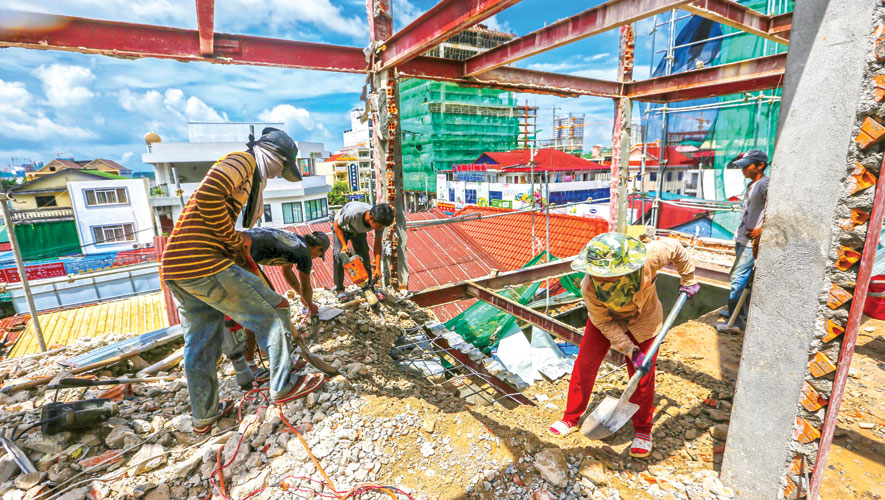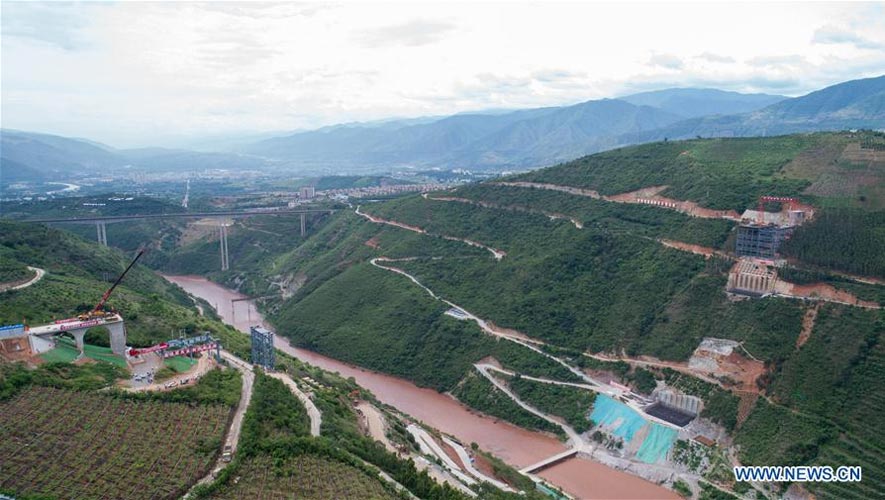Last month dozen of buildings were damaged after a magnitude 6.1 earthquake hit Hongsa district, Xayaboury province, in northern Laos.
For the latest Cambodian Business news, visit Khmer Times Business
Lao News Agency quoted the Department of Hydrology and Meteorology and the Ministry of Natural Resources and Environment of Lao PDR as saying that up to 33 earthquakes were reported between early morning and the afternoon of Nov 21.
It said that the strongest earthquakes of the day measured 6.1 magnitude at 6.50am, 5.9 at 4.03am, 4.8 at 8am, 4.1 at 2pm and 3.6 at 10.36am. All earthquakes were reported in Hongsa district, according to the report.
It said the quake was also felt by residents of many adjacent provinces in Thailand including Loei, Chiang Mai, Khon Kaen, Chiang Rai, Phrae, Kalasin, Lampang and Udon Thani.
It is seen as a signal to Cambodia to keep abreast and find solutions or mechanisms to prevent or warn of a disaster because this country has never before suffered disasters such as tsunamis or earthquakes.
Construction rising fast
At present, the Kingdom’s construction sector has risen remarkably, especially high-rise, residential projects. But experts says that a lot of engineers have yet to think about putting in measures to protect against natural disasters. Some are thinking only of basic safety measures while earthquake safety measures have been added only to an unconfirmed number of high-rise buildings.
According to the latest report from the Ministry of Land Management, Urban Planning and Construction, in 2019, there were 4,446 construction projects in the country, totalling 18,540,879 square meters (sq m), with an estimated investment of $9.3 billion, up 78.88percent compared with the same period last year and involving estimated investment capital of $5.22 billion.
In 2019, there were 432 high-rise buildings. There are 436 buildings of five floors and up (Sihanoukville has 203 high-rise buildings). Of these, 208 have five to nine floors, 135 have 10 to 19 floors, 57 have 20 to 29 floors, 23 have 30 to 39 floors and 13 buildings are 40 floors up or more.
In particular, there are 3,732 housing projects – 38,488 units. There are 40 Borey projects in the country – 16,589 houses or units, with a total floor area of 2, 496,358 sq m. In addition to that, there are 20,781 apartments or villas across the country and 152 condominium projects with 17,707 apartments.
Questions over safety
“So far I am not sure whether all construction and buildings in Cambodia have included earthquake safety measures or not. But I think if they are just residential projects, they may not put this measure in their basement or foundations of the buildings and housing,” said Professor Sieng Peou, a lecturer at the Institute of Technology of Cambodia.
Sieng adds that 30 to 40 high-rise buildings have already included the earthquake safety measures in the construction. However, he says residential projects or housing projects may not have the safeguards.
“I believe they will add earthquake safety measures into the calculation before they start construction,” Sieng adds. “However, what I am concerned about is the housing or residential projects because they have not thought about it or they think about the extra cost of the construction. Also, they note that Cambodia has never encountered such a disaster,” he added.
Sieng says the earthquakes in Laos was not too serious and there was not much damage because the majority of the buildings in Laos and Thailand possess earthquake safety measures.
Total destruction
An earthquake measuring magnitude 5 to 6 will make the furniture move if safety measures are in place. Without them, building may suffer just small cracks. But when it comes to magnitude 6 to 7, some buildings will collapse, while at magnitude 7 to 8, many buildings will be destroyed. From magnitude 8 and above, there will be totally destruction of buildings, bridges and roads.
Some earthquakes may appear to happen but they may be the effects of passing heavy trucks that makes buildings vibrate or from the use of pile drivers in construction.
“At present, we use software or other technology to measure earthquake effects for every high-rise building,” Mr Sieng says. “However, not every house owner wants it.
“At present, some house owners claim that they are better than engineers and they do not believe in us [engineers]. They always think things will be fine. Generally, if the situation remains as it is in Cambodia, it is fine. However, the location of quakes can change day by day. If it is moving to the sea, it will affect Vietnam or other areas close to the sea. However if it is moving on land, it will impact us and we will not know in advance.”
Sieng explains that if the heat of the earth increases a lot, there will be quakes all over the place. However, he adds that where the tectonic plates of the earth are thick and firm as in Cambodia, there will not be any quakes.

Lack of measures
Chrek Soknim, president of the Cambodian Valuers and Estate Agents Association, says some developed countries have strong buildings and the technology to measure or warn about an impending earthquake. “They build buildings that can move or are otherwise resilient to natural disasters such as earthquakes,” he said.
“Most of our building engineers have yet calculated an earthquake effect on buildings. Because we have never experienced an earthquake, we do calculate other safety concerns only.
“When they think about climate change, they will add more measures or calculations to increase safety. We do not think about it yet. The high-rise buildings already built are meant to last 50 years.”
Chin Hok, chief executive officer of Diamond Island Development Co Ltd, said some buildings and new projects in his development areas have already installed earthquake safety measures in their constructions because these investments are from foreign countries.
Chin adds that the high-rise building engineers have already thought about the possibility of earthquakes. However, the residential developers have yet to think about this. “Some high-rise building in Koh Pich (in Phnom Penh) were developed by foreign investors, so they have thought about this. However, as for the villa and residential projects, we do not know.”
Chin adds the new project of Phnom Penh International Airport has included earthquake safety measures. While, some new buildings in Koh Pich have also added them.
Cambodian tycoon Pung Keav Se, chairman of Overseas Cambodia Investment Corp and president of Cambodia Constructor Association (CCA) says that all the projects in Cambodia, especially the high-rise building have been designed to be compliant with earthquakes of magnitude 7, which has never occurred yet in Cambodia.
‘A bit of anxiety’
“We were influenced by neighbouring Vietnam many years ago and it caused a bit of anxiety in Phnom Penh,” Pung added. “Our designers are of the highest level to do these jobs. I’m not much concerned [about it].
“Normally the architect must think about risks such as floods, storms and earthquakes, so we do protect buildings but we are not worried.
“We do not know what the effects of climate change will be, so we do not know about the futurebecause each year temperatures rise more than 1 degree Celsius. We do not know the influence of this on Cambodia, but we are already protected so we do not worry.”
Safety costs cash
Dr Tan Monivann, vice-chairman of the Cambodia Chamber of Commerce, said: “I don’t think a lot of our construction and building experts in Cambodia have yet thought about the possibility of earthquakes.”
Tann adds that the engineers thought of or calculated only about other safety measures for buildings.
“It depends on the budget and funding to implement it because it will cost a lot of money for each building owner to put the earthquake safety measures in.”




